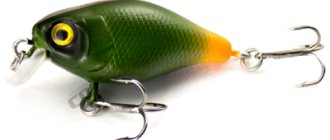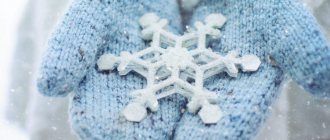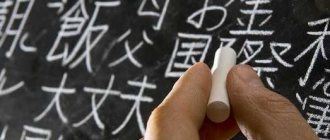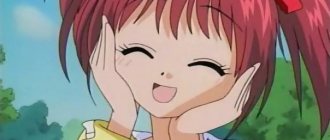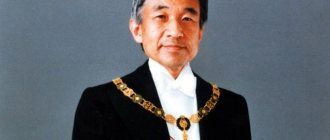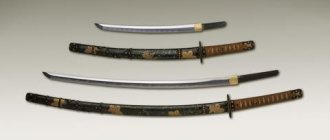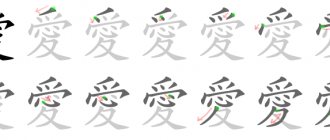“The dog, thanks to its long-standing affection for humans, its insight, patience and obedience, even serves with noticeable joy for many years, and sometimes its entire life, to the experimenter.” (I.P. Pavlov) “It is difficult to find an animal that is more able to express its feelings than a dog. Joy, sadness, gratitude and even remorse - all this can be read in her eyes. We humans are wrong to think that we alone have the ability to express our feelings. Maybe it's true. But look into the dog's eyes! You will see in them the same as in human ones. In essence, dogs definitely have what we call a soul." (Polar explorer Roald Amundsen) “Emotionally, animals are much closer to us than is usually believed... The objective physiological symptoms of deep emotions - especially grief, in animals such as geese and dogs, are practically the same as in people” (Animal psychologist K Lorenz "Year of the Gray Goose")
It has long been known that a dog is a faithful friend and helper of a person. Dogs are often sent on the most important missions and are trusted to save people. They couldn’t do without them during space exploration, they are used in medical research, they are called for help during catastrophes and natural disasters... And what is the contribution to science of the so-called Pavlov’s dog worth! Scientists believe that dogs can heal people with their presence, devotion and love. And it’s not for nothing that Charles Darwin called dogs “loving us more than themselves.” Therefore, shaggy friends are valued all over the world, and monuments to four-legged “younger brothers” are erected in many countries, and their exact number cannot be accurately counted. There are similar attractions in Japan.
In the cities of Wakkanae and Sakai, monuments were erected to 15 sled dogs that could not be evacuated from Antarctica during the Second Antarctic Japanese Expedition. The guide dog, which in 1982 pulled its blind owner from under a car that had lost control on a slippery road, also gained great fame. The dog's heroism was not cheap - he lost one paw. The then Prime Minister of Japan, Ya. Nakasone, admired the dog’s act along with all the people, and the dog was taken around the country and demonstrated as a national celebrity. In addition, this event helped raise a significant amount of money to help blind people.
The most famous “dog” monument is located in the Shibuya district of Tokyo. He immortalized the devotion of an Akita dog named Hachiko, whose life story is known to all Japanese, young and old.
Hachiko was born in 1923 in the city of Odate, and two months later he came to Professor Eisaburo Ueno. The owner went to work at Tokyo University every day. In the morning, the faithful dog accompanied the owner to Shibuya Station, and met him in the evening. But when the dog was 1.5 years old, on May 21, 1925, the professor died of a sudden heart attack far from his pet. And although the owner did not return home, the faithful Hachiko invariably came to the railway station at a certain time and waited for his beloved master for 10 years, until his death in 1935. The professor’s relatives and friends tried to take care of the yearning dog, but Hachiko did not find anyone let you into your faithful heart. After death, the dog was cremated and buried with its owner.
This story became known after an article in the Asahi newspaper and touched the Japanese to such an extent that, thanks to voluntary donations, a bronze monument to the dog was erected at Shibuya Station.
But during the Second World War it was melted down for military needs, and the current copy was delivered in 1948. Once a year, a solemn ceremony is held near the Hachiko monument; hundreds of dog lovers come to bow to the faithful dog. It is also customary to make appointments with a faithful friend near the sculpture. Even without knowing Tokyo and practically speaking the language, it is impossible to get lost if you say the magic word “Hachiko” - any Japanese will immediately show you the place you are looking for.
In general, loyalty and devotion are in the blood of the Japanese nation. Japanese dogs have largely adopted the best traits of their owners. And people are sure that loyalty cannot be met with treason. Therefore, they sacredly honor their pets - they try to treat the living as deities, and they keep a long memory of those who have passed on to another world.
The Japanese also love nature and know how to live in harmony with it, skillfully combining their love with all the achievements of civilization. And, of course, dogs have a very special place in the life of the Japanese. I will not talk about the various dog breeds bred in Japan - this is a topic for a separate discussion. I will give just some interesting facts.
For example, I introduced a very original way to normalize the situation in the team. To do this, a long-haired shepherd named Heidi was placed in the computer office. A kind and affectionate dog greeted employees every morning at the entrance to the office and licked them. It’s surprising that the joy of the company’s employees literally knew no bounds, and they responded to the dog with vigorous strokes and kisses. Many people wanted to talk to their dog during the day, especially after an unpleasant conversation with their boss or experienced stress. Smart Heidi prudently ran around her charges several times a day.
Practical Japanese conducted a study and noticed that employees under the care of a dog not only had an improved mood and increased productivity, but also increased creative activity. And believe me, the Japanese know how to appreciate such things!
The animal faithfully served the company for more than a decade. Hayda recently turned 12 years old. It should be noted that this age is very respectable for an animal. It is equal to approximately 70 years in human terms. Therefore, the shepherd dog was sent to a well-deserved rest with great honor and was even given a substantial pension - she will receive fresh beef every day. Heide also retained her pass to her home company. With the help of this document, the honored employee will be able to visit her former colleagues at any time.
But don't think that the dog position has been empty for a long time. She was taken by a puppy of the same breed of beautiful long-haired shepherd dogs.
The Japanese are trying in every possible way to transform the life of their pets from “dog” almost into “royal”. It’s easy for them to do this, because in order to please their four-legged friend they just need to go to a special dog store. After such visits, dog owners' expenses increase significantly, but is there a price for true joy? The most famous dog supply store is located near Tokyo on the island of Odaibo. It is customary for entire families to go there on weekends. The assortment of the shopping center amazes even the biggest shopping specialist. Many people can only dream of such variety: cosmetics, outerwear, underwear, hats, accessories, fashionable pajamas, capes, national clothes, evening dresses, jewelry, vitamins, medicines, furniture, jars of delicacies, birthday gift sets ... Yes, yes, all this is for dogs! In addition, you can also purchase a puppy in the same store.
For the Japanese, a dog is also the youngest child, who is pampered and taken care of by absolutely everyone. Even in hot weather, dogs can now enjoy ice cream just like their owners. A special variety of this cooling dessert went on sale not long ago. It minimizes the amount of milk sugar, which is difficult for dogs to digest, but adds other beneficial substances. Dog ice cream tastes like yogurt. They also plan to make a product with bacon and sausage flavors.
It would seem that the easiest way to buy a pet is to go to a pet store. But in modern Japan this simple path is gradually dying out. An increasing number of Japanese are buying their faithful friend from toy stores. Mass production of electronic animals has been established, which are almost no different from real ones.
Robotic animals are especially popular among those who do not have suitable conditions for keeping pets, as well as among people who find it difficult to care for a living animal.
Interestingly, toy animals, like real ones, help their owners relieve stress and lift their spirits. The number of electronic animals sold has long exceeded a million.
Once upon a time, the robot dog Aibo, made by , was an engineering marvel. Today, dog lovers can even listen to their pet bark. Dogs with artificial intelligence not only recognize their owner, but are also very trainable. Like an ordinary animal, their character changes over the course of their lives. Dogs are responsive to affection, they rejoice and wag their tail. However, if improperly raised or abused, the animal can become angry and withdrawn.
There are a wide variety of dog breeds - from simple pugs to the most exotic. They all have a wonderful appearance - fluffy fur, shiny eyes, miniature claws.
The most popular dog model today is “Yume Inu”, which translated into Russian means “Dream Dog”. It is not expensive by Japanese standards - about $50, so almost anyone can buy it. The Microanimal model fits comfortably in the palm of your hand. Its price is even less - from 6 to 10 dollars. Despite their miniature size, the animals can walk and sing. They were even included in the Guinness Book of Records as the smallest sound devices.
Fans of cats, hamsters, rabbits, mice, guinea pigs and our other little brothers should not be upset either. As they say, all tastes and needs are satisfied.
But I still want people not to become victims of progress and not completely replace the living with the artificial. After all, whatever you say, a living dog is an extraordinary miracle!
The word "cat" in different languages
- English language: Cat (cat) - cat or cat, Kitten (kitten) - kitten
- Arabic: Kyit or Bissih
- Armenian: Gatz
- Africans: Kaht; kitten – Katji
- Basque: Cathua
- Bulgarian: Kotka, cat - Kotarak
- Welsh: Kahz
- Hungarian: Matska or Tsitsa. Hungarians call their cats Tsitsuka, Tsitsus-Mitsus, Nuau-nuau.
- Vietnamese: Kon Mko
- Hawaiian: Butts, and the kitten is Kiki
- Manx Gaelic: Kate (general cat), Stubbin (Manx breed), Pisheen Kate (kitten)
- Dutch: Kat, diminutive Katji, plural Kattn; Cat - Pois, diminutive Poisje, plural Poizn; Cat - Kete, diminutive Ketatji, plural Ketes
- Greek: the cat is Gata, and the cat is Gatos
- Dari (one of the languages of Afghanistan): write cat, write cat, write, write
- Danish: Kat
- Hebrew: the cat is Chatul, and the cat is Chatula
- Yiddish: Kats or Khatul
- Indonesian: Kutjin
- Irish: Kat (long e, almost o and soft t)
- Irish (Gaelic): Pishkin
- Icelandic: Kattur, Kisa
- Spanish: Gahtoh, Ghetito's kitten
- Italian: cat - Gatto, kitten-cat - Gattina
- Chinese: Mau
- Korean: Gohyanggi
- Khmer: Chma
- Latin: Felis (this is where all the names of cat species come from: felis catus, felis silvestris, etc.)
- Lithuanian: Katines (cat), cat - Kete
- Mayan language^ Mis
- Malaysian: Kukin
- Maltese: Kuatus (cat), Kuatussa - cat
- In Mexico: Felino (cat), Felina (cat), and the plural is Feline; Gato (cat), Gata (cat), and the plural is Kat
- German: the cat is Kater, and the cat is Katze
- German(Swiss): Basi
- Norwegian: Katt
- Pakistani: Shimi
- Polish: Kot (cat), Kotka (cat), and kitten - Kotek
- Portuguese: Gata (cat), and the cat is Gato
- Pashto (one of the languages of Afghanistan): cat - Narpishak, cat - Pishak
- Romanian: Pisikuh
- Serbian: Makka
- Slovak: cat - Mizhu or Kotso, and cat - Macka
- Swahili: Paka
- Thai: Mee-oh
- Tamil: Punai
- Tsalagi (Cherokee language): Vise
- Turkish: Kedi
- Farsi (Persian or Iranian): Gorbay, Bach Gorbay (kitten), Pishi
- Filipino: Pusa, kitten - Kitin, in Visayan dialect kitten - Kurin
- Finnish: Kissa, Katie (diminutive)
- French: Chat - cat, Chat - cat, Chaton - kitten
- Hindi: Minus (cats), kittens - Minusis
- Gypsy (Lovar dialect): Flour
- Cherokee Indian Language: Pronounced Cinta
- Czech: cat - Kochour, cat - hummock
- Chuvash: Kuzhak (emphasis on “a”)
- Swedish: Katt
- Eskimo: Pussy
- Esperanto: Keto (colloquial)
- In Ethiopia: Domaz
- Japanese: Neko (neko)
In Egypt, the cat is called Mau
More about the same: How to call a cat in different languages
Home » Dogs » Dog names
Japanese dog names - review, features and interesting facts
It has long been known that a dog is a faithful friend and helper of a person. Dogs are often sent on the most important missions and are trusted to save people. They couldn’t do without them during space exploration, they are used in medical research, they are called for help during catastrophes and natural disasters... And what is the contribution to science of the so-called Pavlov’s dog worth! Scientists believe that dogs can heal people with their presence, devotion and love. And it’s not for nothing that Charles Darwin called dogs “loving us more than themselves.” Therefore, shaggy friends are valued all over the world, and monuments to four-legged “younger brothers” are erected in many countries, and their exact number cannot be accurately counted. There are similar attractions in Japan.
In the cities of Wakkanae and Sakai, monuments were erected to 15 sled dogs that could not be evacuated from Antarctica during the Second Antarctic Japanese Expedition. The guide dog, which in 1982 pulled its blind owner from under a car that had lost control on a slippery road, also gained great fame. The dog's heroism was not cheap - he lost one paw. The then Prime Minister of Japan, Ya. Nakasone, admired the dog’s act along with all the people, and the dog was taken around the country and demonstrated as a national celebrity. In addition, this event helped raise a significant amount of money to help blind people.
The most famous “dog” monument is located in the Shibuya district of Tokyo. He immortalized the devotion of an Akita dog named Hachiko, whose life story is known to all Japanese, young and old.
Hachiko was born in 1923 in the city of Odate, and two months later he came to Professor Eisaburo Ueno. The owner went to work at Tokyo University every day. In the morning, the faithful dog accompanied the owner to Shibuya Station, and met him in the evening. But when the dog was 1.5 years old, on May 21, 1925, the professor died of a sudden heart attack far from his pet. And although the owner did not return home, the faithful Hachiko invariably came to the railway station at a certain time and waited for his beloved master for 10 years, until his death in 1935. The professor’s relatives and friends tried to take care of the yearning dog, but Hachiko did not find anyone let you into your faithful heart. After death, the dog was cremated and buried with its owner.
This story became known after an article in the Asahi newspaper and touched the Japanese to such an extent that, thanks to voluntary donations, a bronze monument to the dog was erected at Shibuya Station.
But during the Second World War it was melted down for military needs, and the current copy was delivered in 1948. Once a year, a solemn ceremony is held near the Hachiko monument; hundreds of dog lovers come to bow to the faithful dog. It is also customary to make appointments with a faithful friend near the sculpture. Even without knowing Tokyo and practically speaking the language, it is impossible to get lost if you say the magic word “Hachiko” - any Japanese will immediately show you the place you are looking for.
In general, loyalty and devotion are in the blood of the Japanese nation. Japanese dogs have largely adopted the best traits of their owners. And people are sure that loyalty cannot be met with treason. Therefore, they sacredly honor their pets - they try to treat the living as deities, and they keep a long memory of those who have passed on to another world.
The Japanese also love nature and know how to live in harmony with it, skillfully combining their love with all the achievements of civilization. And, of course, dogs have a very special place in the life of the Japanese. I will not talk about the various dog breeds bred in Japan - this is a topic for a separate discussion. I will give just some interesting facts.
For example, I introduced a very original way to normalize the situation in the team. To do this, a long-haired shepherd named Heidi was placed in the computer office. A kind and affectionate dog greeted employees every morning at the entrance to the office and licked them. It’s surprising that the joy of the company’s employees literally knew no bounds, and they responded to the dog with vigorous strokes and kisses. Many people wanted to talk to their dog during the day, especially after an unpleasant conversation with their boss or experienced stress. Smart Heidi prudently ran around her charges several times a day.
Practical Japanese conducted a study and noticed that employees under the care of a dog not only had an improved mood and increased productivity, but also increased creative activity. And believe me, the Japanese know how to appreciate such things!
The animal faithfully served the company for more than a decade. Hayda recently turned 12 years old. It should be noted that this age is very respectable for an animal. It is equal to approximately 70 years in human terms. Therefore, the shepherd dog was sent to a well-deserved rest with great honor and was even given a substantial pension - she will receive fresh beef every day. Heide also retained her pass to her home company. With the help of this document, the honored employee will be able to visit her former colleagues at any time.
But don't think that the dog position has been empty for a long time. She was taken by a puppy of the same breed of beautiful long-haired shepherd dogs.
The Japanese are trying in every possible way to transform the life of their pets from “dog” almost into “royal”. It’s easy for them to do this, because in order to please their four-legged friend they just need to go to a special dog store. After such visits, dog owners' expenses increase significantly, but is there a price for true joy? The most famous dog supply store is located near Tokyo on the island of Odaibo. It is customary for entire families to go there on weekends. The assortment of the shopping center amazes even the biggest shopping specialist. Many people can only dream of such variety: cosmetics, outerwear, underwear, hats, accessories, fashionable pajamas, capes, national clothes, evening dresses, jewelry, vitamins, medicines, furniture, jars of delicacies, birthday gift sets ... Yes, yes, all this is for dogs! In addition, you can also purchase a puppy in the same store.
For the Japanese, a dog is also the youngest child, who is pampered and taken care of by absolutely everyone. Even in hot weather, dogs can now enjoy ice cream just like their owners. A special variety of this cooling dessert went on sale not long ago. It minimizes the amount of milk sugar, which is difficult for dogs to digest, but adds other beneficial substances. Dog ice cream tastes like yogurt. They also plan to make a product with bacon and sausage flavors.
It would seem that the easiest way to buy a pet is to go to a pet store. But in modern Japan this simple path is gradually dying out. An increasing number of Japanese are buying their faithful friend from toy stores. Mass production of electronic animals has been established, which are almost no different from real ones.
Robotic animals are especially popular among those who do not have suitable conditions for keeping pets, as well as among people who find it difficult to care for a living animal.
Interestingly, toy animals, like real ones, help their owners relieve stress and lift their spirits. The number of electronic animals sold has long exceeded a million.
There are a wide variety of dog breeds - from simple pugs to the most exotic. They all have a wonderful appearance - fluffy fur, shiny eyes, miniature claws.
The most popular dog model today is “Yume Inu”, which translated into Russian means “Dream Dog”. It is not expensive by Japanese standards - about $50, so almost anyone can buy it. The Microanimal model fits comfortably in the palm of your hand. Its price is even less - from 6 to 10 dollars. Despite their miniature size, the animals can walk and sing. They were even included in the Guinness Book of Records as the smallest sound devices.
Fans of cats, hamsters, rabbits, mice, guinea pigs and our other little brothers should not be upset either. As they say, all tastes and needs are satisfied.
But I still want people not to become victims of progress and not completely replace the living with the artificial. After all, whatever you say, a living dog is an extraordinary miracle!
The word "cat" in different languages
In Egypt, the cat is called Mau
More about the same: How to call a cat in different languages
Home » Dogs » Dog names
"Dog"
The character 犬 entirely represents one element , as you might guess, “dog”. It is also key number 94 , which we know from the previous sign.
Him:ケン
Kun:いぬ – dog
This hieroglyph is pictographic . Its ancient form depicts a dog standing on its hind legs. Of course, now this silhouette is difficult to read due to the fact that the outline of the hieroglyph has transformed over time.
| Word | Reading | Translation |
| 犬歯 | けんし | fang |
| 愛犬 | あいけん | favorite dog |
| 野犬 | やけん | homeless dog |
| 小犬 | こいぬ | puppy |
The character 虎 is decomposed into two components : “tiger” 虍, which is key number 141 , and “legs” 儿.
Him:コ
Kun:とら – tiger
This sign is also a pictogram . A long time ago, the figure of a tiger standing on its hind legs was discernible in it (those are our “legs”!), but now only imagination will help you see it.
| Word | Reading | Translation |
| 虎穴 | こけつ | tiger's den |
| 猛虎 | もうこ | angry tiger |
| 虎口 | ここう | tiger's mouth; trans. certain death |
| 虎斑 | とらふ/とらぶち | tiger stripes |
In the hieroglyph 狼, two components : on the left is “dog” 犭, which we already know, and on the right is 良 “good”. As you might have already guessed, “dog” is the key of this sign at number 94 .
Him:ロウ
Kun:おおかみ – wolf
The origin of this hieroglyph is simple: the left element “dog” is responsible for its meaning , symbolizing an animal related to dogs, and the right element is a phonetician . If you look at the meaning of individual components, you get an absurd but funny mnemonic rule : “wolf” 狼 is “good” 良 “dog” 犭.
| Word | Reading | Translation |
| 虎狼 | ころう | tiger and wolf; beasts of prey; arr. Cruel person |
| 天狼星 | てんろうせい | Sirius (star in the constellation Canis Major) |
| 狼狽 | ろうばい | confusion, confusion; confusion, panic |
| 狼藉 | ろうぜき | disorder, confusion; riot, outrage, debauchery |
Our article has now come to an end. We hope you found it useful. For those who missed the previous material on hieroglyphics, we leave links to it:
Good luck in learning Japanese!
Japanese characters: “cat”, “cat”, “dog”, “tiger”, “wolf” - we analyze the readings, spellings and meanings in this article. Let's learn Japanese kanji together on our website!
Source
Japanese dog names
Japanese names for dogs are becoming increasingly popular, because they combine euphony, originality and deep meaning. We suggest you follow the oriental fashion when choosing a nickname for your pet.
They say that a name determines one's destiny. Perhaps this statement is true not only for people, but also for dogs. If your pet's name is more than just a good combination of sounds, choose a name with meaning for it. Japanese dog names combine original sound and deep meaning. It is nicknames in Japanese that are increasingly becoming the choice of loving owners.
Have no doubt that a Japanese name will suit your dog. Among the many proposed options, you can find a name for an exquisite purebred dog, a stern service dog or a funny mongrel. Japanese nicknames are universal for any breed. The only thing that the owner should be guided by when choosing is the correspondence of the Japanese name to the dog - its character and exterior.
How to say dog in Japanese
like in Japanese dog
dog in Japanese - inu ()
Morning in Japanese will be asa (asa) () Day in Japanese - threads (nichi) or hi (hi) () Night in Japanese - yoru (yoru) () Flower in Japanese hana (hana) () Good luck -Japanese - un (un) () Happiness/luck in Japanese - shiawase () Good in Japanese - Ii (ii) () mother in Japanese haha (haha) or politely oka: san (okaasan) ( ) dad in Japanese is titi (chichi), and politely (otousan) () older brother in Japanese is ani or politely nisan () younger brother in Japanese oto: to () older sister in Japanese ane () younger sister in -Japanese imo: then () dragon in Japanese - ryuyu () konichewa - in Japanese it will be read konnichiwa - good afternoon in Japanese () friend in Japanese - tomodachi () congratulations in Japanese omedo: () cat in- Japanese – neko () wolf in Japanese – ookami () death in Japanese – si () fire in Japanese – hi () water in Japanese – mizu () wind in Japanese – kaze () earth in Japanese – tsuchi () moon in Japanese – tsuki () angel in Japanese – tenshi () student in Japanese – gakusei () teacher in Japanese – sensei () beauty in Japanese – utsukushisa () life in Japanese – sei ( ) girl in Japanese – sho:jo() beautiful in Japanese – utsukushii () beautiful girl in Japanese bisho:jo () god in Japanese – kami () sun in Japanese – hi () world in Japanese – sekai () way in Japanese – to: or Michi () black in Japanese – () tiger in Japanese – tora () ass in Japanese – shiri () miss in Japanese – taikutsu () light in Japanese – hikari () fox in Japanese – kitsune () red in Japanese – akai () ambulance in Japanese – kyu: kyu: xya () anime in Japanese – anime () sakura in Japanese – sakura () health in -Japanese – kenko: () baka in Japanese – fool in Japanese () shadow in Japanese – kage () why in Japanese – nande? () hare in Japanese - usagi () raven in Japanese - karasu () star in Japanese - hoshi () bear in Japanese - kuma () warrior in Japanese - bushi () soul in Japanese - reikon () sky in Japanese – sora () eye in Japanese – me () rose in Japanese – bara () strength in Japanese – chikara () white in Japanese – shiroi () snake in Japanese – hebi () child in -Japanese – kodomo () time in Japanese – toki () girl in Japanese – onna no ko () kiss in Japanese – kissu () woman in Japanese – onna () lion in Japanese – shishi () master -Japanese – shujin () work in Japanese – shigoto () summer in Japanese – natsu () spring in Japanese – haru () autumn in Japanese – aki () winter in Japanese – fuyu () vampire in Japanese – kyu: katsuki () tree in Japanese – ki () princess in Japanese – hime () sword in Japanese – ken () killer in Japanese – satsugaisha () city in Japanese – mati () lily in Japanese – yuri) kill in Japanese – korosu () stone in Japanese – willow () lotus in Japanese – hasu () stranger in Japanese – gaijin () man in Japanese – otoko () boy in Japanese – otoko no ko () Happy New Year in Japanese - Shinnen akemashite omedeto gozaimas ()
Source
Appearance of American Akita
Not a single element of the American Akita's body distracts from the overall appearance of the dog - everything is proportional and harmonious.
The American Akita is a large, powerful dog with strong, well-developed bones, harmoniously built with a square body. Her head is massive, wide with a flat skull, square and powerful jaws, and a voluminous muzzle. The transition from forehead to muzzle is well defined. The nose is large and black. The lips are thick, tightly fitting, black.
The eyes are deep-set, small in size, triangular in shape, dark brown in color. Unlike other dogs, the eyes of the American Akita are not only “loving”, but also cunning, aware of their purpose for the owner.
The ears are erect, thick, small in size, triangular in shape, with rounded ends, slightly tilted forward towards the eyes. The neck is quite short, powerful and strong. The back is straight and muscular. The chest is well developed, deep and wide. The limbs are straight, parallel to each other with powerful muscles. The tail is set high, thick, covered with hard and dense hair, held above the back by a ring or double ring.
The coat is straight, not lying flat, with a soft, thick and dense undercoat. At −30 C°, a dog will sleep carefree on the street.
The color is quite varied and can be anything: white, fawn, red, piebald, brindle. There may be a mask or a mark on the muzzle. In piebald dogs, large spots cover more than one third of the body.
Nicknames for boy puppies
For male puppies, the Japanese language has a wide selection of euphonious and unusual nicknames:
- Aki - autumn,
- Akio - born beautiful,
- Akira - morning bright, light,
- Akihiro - born with great intelligence,
- Goro is the fifth born,
- Jero is the tenth born,
- Jiro is the second born,
- June is obedient
- Junichi - obedient to parents
- Deiki is priceless
- Izamu - militant
- Izao - honored,
- Iori - dependent on circumstances,
- Yoshi is good
- Ichiro - first born,
- Kayoshi - unobtrusive
- Keiji - respectful
- Ken is healthy and strong,
- Kenji is an intellectual and humanist,
- Kenichi - builder of the future,
- Kenta is healthy and strong,
- Kenshin is modest and honest,
- Kero - born ninth,
- Koji - manager
- Koichi - the first to see the world,
- Koheku - amber,
- Kazuki is the founder of the dynasty,
- Keitashi - firm and incorruptible,
- Catsero is the son of the winner,
- Katsu is the winner
- Makoto is true
- Masashi is correct, luxurious and official,
- Mitsuo - third born,
- Michi is the leader along the path,
- Maseo - incorrigible,
- Memoru is a protector
- Menebu - diligent,
- Masa - steward fairly,
- Naoki - honest and strong,
- Noboru - virtuous
- Nobu - faithful
- Nori is honest
- Rio is excellent
- Roquero - sixth born
- Raiden is formidable and punishing,
- Suzumu - progressive,
- Setoru - enlightened
- Setoshi - smart and wise,
- Takashi is a praiseworthy son of noble birth,
- Taro is the eldest among brothers,
- Tomayo is a guardian
- Toru is a wanderer
- Toshi is the destroyer
- Tedashi - loyal and fair,
- Takeo is a brave warrior,
- Takeshi is a fierce warrior,
- Takumi - artisan
- Tekeo - noble birth,
- Hideki - luxurious and wealth-bringing,
- Hidiki - excellent and luxurious,
- Hizeo - long-lasting,
- Hizeshi - living forever,
- Hikeru - shining and illuminating,
- Hiro is widely known
- Hiroki - brings a lot of joy,
- Hiromi is the most beautiful and famous,
- Hitoshi - balanced
- Hedzheim is the first to step on the path,
- Haruo - born in spring,
- Shig - excellent and smart,
- Shijo - bringer of good,
- Shin is true
- Shiro - fourth born
- Eiji is excellent and reliable,
- Yuichi is brave and friendly,
- Yuki - snowy and joyful,
- Yudei - great and heroic,
- Yuchi - brave and strong,
- Yasuo - honest and peaceful,
- Yasushi - bringer of truth.
Baby Tohru is bored
How does a nickname affect a dog's character?
The name chosen by the owner of the dog should personify the character of the animal and, without visual acquaintance, indicate its breed. The pronounced name should be easily perceived by ear, not cut into it, and similarly remembered by the animal.
The beauty and unrivaled appearance of Japanese dogs
Note! A soft and gentle combination of sounds indicates that the nickname belongs to a beautiful domestic creature, and, conversely, sharp and hard sounds warn that the four-legged friend is at least a German shepherd.
When deciding on an animal's name, you should know its birth history and parents. According to unconfirmed information, many dog handlers are confident that the nickname chosen by the owner influences the dog’s behavior and decides its fate.
Professionals recommend giving preference to short dog names, since they are quickly remembered by animals and do not twist the owner’s tongue when addressing the dog.
Japanese native horses
Go to the section table of contents: Pony breeds
All Japanese horse breeds have a characteristic number of common features, and in particular, they all belong to ponies, since their height does not exceed 147 cm. Their heads are relatively large, and they carry their necks horizontally. The manes of Japanese horse breeds are thick, bushy and flowing. The most common body colors of Japanese horses are bay and roan. As a rule, there are no white markings on the head and legs, but there is often a black stripe on the back.
All Japanese breeds are famous for their tenacity, as well as their ability to survive in the most extreme and unfavorable conditions.
Special studies have established that horses did not live on the Japanese Islands during the Paleolithic, Mesolithic and Neolithic periods. They came to the Japanese Islands from Asia in different ways and at different times. It is reliably known that domestic horses lived in Japan already in the 6th century, and perhaps even in the 4th century.
Japanese native horses were widely used for military purposes until the invention of firearms in the late 16th century. Therefore, in those years, the ability to handle a horse was one of the most important qualities that was valued in the warriors who founded the samurai class. Since that time, horses have played an important role in Japanese culture and in Japanese religion, and therefore, even today, white horses are kept in places where shrines of the Japanese people are located.
An interesting fact is that horses were not used in Japanese agriculture. And in the fields, cattle were widely used instead. He was also harnessed to carriages and carts. And horses served as pack animals and were used to carry loads in inaccessible mountain areas. Only people belonging to the upper class rode horses.
Over time, various breeds of horses began to develop on the Japanese islands, which were well adapted to local environmental conditions. But in general, all these horses were relatively small in size. Therefore, many rulers and leaders attempted to increase their size through selection and breeding by crossing them with imported foreign horses.
Records dating back to the Edo period indicate the important role of Dutch horses in this process, which were donated to the imperial court. And since these horses are mentioned under the name “Persian,” they could be horses of the Arabian or Turkmen breed. Thus, several "improved" breeds, such as the Nambu, Migaru and Tosa breeds, became especially popular in Japan. And as a result of systematic crossing, based on native Japanese breeds, in 1932 it led to the appearance of the Kushiro breed, which today has almost completely disappeared.
During the Mei era, large thoroughbred horses were imported from Europe and North America in order to increase the size of the Japanese horse and to make it more suitable for military purposes. In addition, the Japanese government has introduced special training courses throughout the country to increase the use of horses in agriculture. This was aimed at encouraging Japanese farmers to breed large horses with the possible subsequent supply of them for the needs of the army.
Over the years, foreign breeders have exported various breeds of horses to Japan: English Thoroughbreds, Anglo-Arabs, Hackneys, and several draft breeds such as the Belgian and Breton draft breeds. As a result of crossing representatives of local breeds with large European horses, such Japanese breeds as Kandachi, Yururi, and Hokkaido appeared. As a result of numerous crossings with imported breeds, most of the native Japanese breeds have practically disappeared, with the exception of the remote islands of the country.
Today in Japan there are eight officially recognized breeds of horses, each of which belongs to a specific region and differs from each other in color, size and other characteristics. However, Japanese horse breeds have a number of common characteristics and they are all famous for their tenacity and ability to survive in extreme conditions.
Driver! Lead your horse
Over there, across the field!
There's a cuckoo singing.
Matsuo Basho
The horse has never been indigenous to Japan. It was brought from the mainland, and the appearance of frisky mares on the island was extremely highly appreciated by local residents. The first mentions of the use of horses in Japan come from sources from the Kofun era (late 3rd-6th centuries AD). It was from this time that horses brought from East Asia began to spread throughout the country. In the Middle Ages, horses were used primarily as beasts of burden, the main draft force in agriculture was bulls, and only representatives of high society rode horses. “The art of being a horseman” was one of the most valuable qualities of a warrior, and only noble samurai could afford the luxury of owning a horse and being part of the feudal cavalry.
Japanese horses were radically different from their continental counterparts; they were short and shaggy, and from birth they had a very angry disposition.
But at the same time, they were unusually hardy, they could move quickly and quite deftly, which was especially important in the rugged terrain of Japan. Over the course of several centuries, the formation of indigenous horse breeds adapted to local conditions took place in Japan. All of them were relatively small (130–150 centimeters at the withers), so many rulers, trying to improve the breed, added the blood of other horses to the blood of the aborigines. Since the Edo era (1607–1867), among the gifts that Dutch merchants presented to the shogun, certain “Persian” stallions are constantly mentioned, which in reality were most likely Arab or Turkmen. Imports of horses increased significantly during the Meiji Restoration (1868–1912), when the imperial government began to actively encourage peasants to use horses for economic purposes. Special training classes and courses were organized in which farmers were taught the idea of the need to raise larger breeds of horses, ones that would also be suitable for military needs. In order to ensure the fulfillment of this task, a large number of sires were imported from Europe and North America, among which purebred riding, Arabian and Anglo-Arabian stallions predominated. In addition, heavy trucks were also brought to Japan, especially Belgians and Bretons.
The Art of Yabusame
Historians note one interesting feature. As a rule, in Japan in the Middle Ages a horse was mounted not on the left, but on the right. While riding, the reins were usually held with both hands, but in battle the samurai hooked the reins to the rings located on the chest plate of the armor, and controlled the horse exclusively with his legs and body. They shot from a horse in the same way.
The technique of archery from a horse is known by different names. This type of shooting was first mentioned in the Nihongi (Annals of Japan, 720), which talks about uma-yumi. Later, shooting from a horse began to be called “yabusame” in historical sources. Yabusame reached its peak during the Kamakura period, when horse riding, called bajutsu, in combination with archery, became a mandatory form of martial arts for high-ranking samurai. Archery from horseback was one of the favorite competitions of the samurai when they formed teams for equestrian competitions. As a rule, major tournaments were held on the racing circuit at the Tsuruga oka Hachiman Shrine, which was located in the city of Kamakura (now Kanagawa Prefecture), or on the seashore during Shinto holidays. A Shinto priest acted as the main manager and judge of the competition. The target or armor of a warrior (in the Kamakura period) was placed vertically near the arena, and the shooter, racing on a horse in a circle, had to shoot at the target three times at an interval of ten seconds. The rider held the bow perpendicular to the line of movement, pulling it with a jerk above his head and lowering it so that the arrow was at eye level.
There was very little time left for aiming; the shooting was almost offhand.
Yabusame continues to exist today, but as an entertainment spectacle. Traditionally, horseback archery competitions are held on September 15–16 in the city of Kamakura.
Along with yabusame, the so-called inu-o-mono
– an exercise in chasing dogs on horseback. Inu-o-mono, just like yabusame, developed in the warrior excellent abilities to control a horse and at the same time quickly and accurately shoot from a bow while galloping. These qualities, undoubtedly, were an indisputable advantage for the bushi in numerous mounted battles. Inu-o-mono, unlike shooting at a stationary target, pursued the goal of hitting a moving object. A small dog was released into the arena, and the rider, maintaining the movement at a gallop or a frisky trot, had to hit the dog with a training arrow with a wooden tip.
Often the same name was used to refer to archery at a fox during a hunt.
Only two schools of horse archery have survived to this day - Takeda and Ogasawara. The founders of both are considered to be the famous warrior and strategist Minamoto no Yoshimitsu.
Full warrior armor.
Monkey Day and Wild Mongolian Guys
The warriors had another opportunity to train in horse riding. During the traditional capture of wild horses, which every year in the middle of the fifth month, on the day of the monkey (the 12th day of the cyclical countdown), was carried out with the participation of the same Shinto priests. In the Middle Ages, such unique hunts were organized on the Kanto plain, and it was with their help that the stables were replenished with new and war horses, and at the same time the hunt made it possible to identify the best rider (or group of riders) of the prince’s squad. It is clear that these were bajutsu training for warriors, extremely complex and intense, which included jumping over rough terrain and overcoming obstacles. Moreover, the pursuit of wild horses was carried out in full equipment: helmets, armor, and battle banners (nabori). Later, this custom also turned into a Shinto holiday and was called “namaon” - field cavalry maneuvers. The purpose of the holiday is to inspire young men and adults of the bushi, to instill in them courage, and this idea fully justified itself: watching this dangerous and extremely spectacular spectacle, the sons of the samurai were not averse to taking part in the races. The main point of the hunt was the races themselves, various types of pursuits, as well as the struggle to capture the banner among two groups of participants.
Naturally, such training, as close as possible to combat conditions, gave good results. The samurai cavalry was a well-trained formation that knew how to fight in almost any conditions and skillfully use weapons.
In battle, when approaching the enemy, the samurai began to gallop along a zigzag path, which confused the enemy archers. In close combat, spears and swords were used.
As a rule, samurai tried to wedge themselves into individual enemy groups in order to cause a split in their camp. Sometimes the battle was divided into individual fights. In the 12th century, there was a so-called nanori custom, the meaning of which was as follows: before entering into battle, a samurai had to introduce himself to another samurai. In those days, battles were more like giant tournaments than fights without rules. But already in the 13th century this custom faded into oblivion, and mass cavalry clashes became commonplace.
Historians note another interesting detail: in the 13th century, the Japanese, when they first encountered the Mongol conquerors, experienced a real shock. It turns out that the Mongols, unlike the noble samurai, did not have the habit of introducing themselves to the enemy before battle, they simply went on the attack, trying to crush them with numbers rather than with skill. For samurai, such behavior, outside of any rules, seemed wild and did not in any way coincide with their ethical standards and code of honor.
Fully equipped
An ideally ridden and trained horse had an excellent sense of its owner and participated in the battle on an equal basis with him - it jumped back in time, reared up, bit, and beat the enemy’s horse with its front and rear. The horses were taught a lot of things, for example, how to overcome water obstacles, of which there were a great many in Japan. The technique of crossing rivers and lakes was taught on ponds located near the castles of local feudal lords.
The set of horse equipment was called bagu and was borrowed mainly from the Chinese. It included a saddle, bridle and horse armor. The bridle was called atsubusa, it consisted of kutsuwa bits, hanagawa cheekpieces, kangamaita headpieces and kutsu-wazura bridles, which were made of silk or cotton cord and beautifully decorated.
The bridle was decorated with tassels. To silently sneak up on the enemy, the bridle was wrapped in cloth, and a special bag was put on the horse’s muzzle, on top of which was an iron cutikago muzzle.
To control the horse, another important item was needed - a flexible muti rod, which became an analogue of the modern whip. Samurai did not use spurs.
The saddle was called kura and had high front and rear pommel, which were located at right angles to the seat. It was made of wood with metal decorations and quite high: a kitsuke sweatshirt and a special name pad were placed under it. Also, the saddle was often decorated with ribbons, at the ends of which bells rang. Saving on jewelry was considered bad form among the samurai. The recommendations that existed at that time directly stated that samurai should not get too carried away with decoration, and in their outfits should give preference to simple linen fabrics. But in paintings and engravings of that era, you can often see harness so richly decorated that it’s hard to see the horse behind it - embroidered reins, saddle pads, bibs all around...
Japanese abumi stirrups were somewhat different from their European counterparts. Initially, they had a closed toe and an elongated footrest at the back; later they were modernized - the sides of the toe were removed, after which the stirrup acquired a form that lasted throughout the Middle Ages until the 19th century. Usually stirrups were made entirely and hollowly of iron, but there were examples that had an iron frame with wooden inserts. Some stirrups had a hole in the footrest to drain water that got there when overcoming water obstacles, as well as a rod that protected the leg from slipping to the side.
Armor for Umeroi horses appeared only in the 17th century. It should be noted that this was the beginning of the reign of the shoguns from the Tokugawa dynasty, who completed the unification of Japan. The period of numerous feudal wars and civil strife has become a thing of the past, so it can easily be assumed that the armor was now intended exclusively for ceremonial appearances, and not for combat operations. Many parts of the armor were made of leather or made of papier-mâché, although iron inserts were also used. In most cases, armor was made from small flakes of leather, silver-plated and sewn onto fabric.
The set of armor consisted of a mantle, plates that protected the neck and sides of the horse, which were often beautifully and richly decorated with carvings, pendants and ribbons.
An umazura was put on the horse's head - a special headpiece made in the shape of the head of a horse, deer or dragon and, to enhance the effect, often decorated with mustaches, branched horns or other inserts. One cannot envy the impressions of an ordinary infantryman when a horseman gallops towards him on a grinning horse with horns...
Kirill Trubitsyn,
Marina Goryacheva, Department of Archeology, Faculty of History, Moscow State University
The material is posted with the permission of the copyright holder - the magazine “My Horse”.
Japanese horse breeds all have a set of common characteristics. For example, they are all related to ponies, since their height often cannot reach over one hundred and forty-seven centimeters. Japanese native horses have rather large heads.
Chinese names for dogs
While in Korea dog names are associated with food, in China animals are named according to their color shades and body shape. Common and popular Chinese nicknames include:
Analyzing dog names can tell you which ones are Japanese, Chinese or Korean. The fundamental differences between them and the clear designation of the nickname make it possible to make the right choice in accordance with the appearance, power, temperament, physique and other characteristics of the animal.
Sika deer
Sika deer are among the animals that are considered the symbol of Japan. Their distinctive feature is their branched horns, which have many branches. They are not as impressive and massive as those of red deer, but they are still striking. These animals live in the forest, but can be among people in the city without any problems or embarrassment. They are active in the morning and evening.
During the rut or danger, sika deer whistle loudly, hoarsely and protractedly. Animals feed on plant foods. In winter, they can cause harm to trees by eating their buds and shoots.
It is interesting to watch male sika deer during the rut. Real fights without rules take place between rivals, in which the loser may even lose his horns.
It is worth mentioning antlers. They are still of great value, so the animal is constantly hunted. It has gotten to the point where the number of sika deer has decreased significantly. Therefore, this animal is listed in the Red Book of Japan.
Feeding
When getting an Akita, you should take into account their historical homeland. Over so many centuries, representatives of the breed have adapted to a certain diet.
A large amount of protein that is unusual for them, based on chicken or beef, can cause allergies.
The diet should consist, for the most part, of:
If you are a supporter of dry food, then choose food consisting of only one type of protein, with a protein share of no more than 25%. Although, of course, everything is individual.
Japanese macaques
Japanese macaques have a deep red muzzle and thick gray and brown fur. They can mainly be found in the northern regions of Japan. For forest dwellers, their favorite foods are leaves, fruits, and roots. Macaques can diversify their menu with insects and bird eggs.
Hot springs in the northern regions of Japan are their favorite habitat because cold and snow can occur there for up to 4 months of the year. In large groups of Japanese macaques, sometimes numbering up to 100 individuals, there is a strict hierarchy.
To communicate with each other, animals use the language of facial expressions, gestures and sounds. Japanese macaques are considered an endangered species, so they have recently been listed in the Red Book and are actively protected by humanity.
It’s interesting that animals survive the cold on winter days. They can practically be called hostages of warm water in the springs. In order to find food, macaques have to leave the water.
Animals' wet fur causes them to become very cold after leaving a warm source. Their group came up with a special duty. Two macaques do not wet their fur, but are constantly looking for food and offering it to those sitting in the springs.
This once again proves that macaques are smart animals. This is the most expensive of many ornamental pets. Not every person can afford to have one in their home.
Rules for choosing a foreign nickname
If the dog is purebred and is bought by the future owner from a kennel, it already has its own nickname. The rules for choosing a dog's name are as follows:
"Japanese" from the nursery
Note! The names given in nurseries are complex and difficult to pronounce. They are officially included in all documents for the purpose of participation in exhibitions and other competitions. If the owner does not intend to do this, the puppies are given a second, shorter name that matches his temperament and is easy to pronounce.
As a source of inspiration for choosing a nickname, you can use the names of cartoon and movie characters, as well as celebrities.
Geographic nicknames
An inexhaustible source of inspiration are the names of Japanese cities, regions, and settlements. Here you can find a suitable name for both a boy puppy and a girl puppy:
In the photo - Towada:
Puppy named Gifu:
And here is Eniwa:
Dear Bando:
What not to call a pet
The name of a four-legged pet automatically determines its fate and future. Therefore, dog experts do not recommend giving them funny and long nicknames, which will make communication with the animal problematic. The dog's name should not be associated with close friends and relatives, so as not to offend them. Also, it should not be obscene.
It is undesirable to call a dog by a common nickname due to the difficulty of issuing commands to a dog park, where there may be several more individuals with the same name.
Important! The dog's name should be short, sonorous and concise. When addressing an animal, he should have no doubt that it was he who was called.
What to name a dog is a personal matter for the owner. A survey and analysis of popular dog names showed that most of the new generation pets received exclusive names of Japanese, Korean or Chinese origin. The reason for this choice lies in the beauty and melody of the sounds, the accuracy of determining the temperament and visual characteristics of the dog. Advice from a dog handler or a detailed study of the encyclopedia of Japanese nicknames, which is easy to find in Internet resources, will help you avoid making mistakes in determining the nickname correctly.
Among the original and unusual dog names, the leaders will be Japanese ones. They are well remembered by both people and their pets. They are pronounced softly but loudly. Such a nickname can be chosen both because of the beauty of its sound and because of a certain meaning. Therefore, in addition to names with meaning, geographical, famous, gastronomic, and anime-inspired nicknames are also popular.
Japanese characters: "cat", "cat", "dog", "tiger", "wolf"
Communication with our smaller brothers fills human life with joy. If you have a cat or dog, remember how they came to you and lay at your feet in difficult times to calm you down. Animals feel our emotions and repay our good attitude with devotion, which is why they have become faithful companions of people. Predatory animals, on the contrary, frighten people, but at the same time they are the personification of unbridled nature. Wild beauty fascinates people no less than the willingness to follow the owner anywhere. This article on hieroglyphs is dedicated, as you might have guessed, to animals. We'll look at the kanji for cat, cat, dog, tiger, and wolf .
Breed characteristics
Short description
| Origin: | Japan |
| Conditions of detention: | In a house with a yard, in an apartment |
| Purpose: | Companion dog |
| Color: | Grey, brown, red, white, “pepper and salt”, brindle |
| Wool length: | Moderate length |
| Adult dog size: | The height at the withers for females is on average 46.5 cm, for males - 50 cm. |
| Average life expectancy: | 11-13 years old |
| Walk: | 2 times a day for 30 minutes in winter and 45 minutes in summer |
| Physical activity needs: | Intense physical activity, games, jogging |
| Fédération Cynologique Internationale (FIC) classification: | Group 5. Spitz and primitive; Section 5. Asian Spitz and related breeds |
| Puppy price: | 25,000 rubles without a canine passport, 35,000 – 40,000 rubles with it. Individuals with a pure pedigree start from 50,000 rubles |
The ancestors of the Hokkaido are medium-sized dogs from Japan, who arrived from the island of Honshu along with migrants in the period from 1185 to 1333, when relations between Hokkaido and eastern Honshu were actively developing.
4 species of Ainu were bred, differing in breeding lines:
Chitose are the most common because their pedigree is pure at the initial stage of breeding. In addition, they have a snow-white color, small size and compact head. Atsuma, on the other hand, had a cone-shaped head and a brindle coloration.
The breed became widespread in the 40s of the 20th century, when its official, international name arose. Before that, it was called Ainu-ken, which literally meant “dog of the Ainu people.” In addition, during the conflict between two military-political coalitions in the 20th century, these dogs were specially trained to alert front-line soldiers about the presence of enemy camps nearby.
Famous nicknames
It's a good idea to name your pet after a famous person from Japan:
- Jimmu is the first emperor.
- Saga Hiro - Empress Consort.
- Zheng Chenggong is a famous pirate.
- Akihito is the modern ruling emperor of the country.
- Showa, Hirohito is the emperor whose reign was the longest.
- Nakano Takeko is a female samurai.
- Saigo Takamori is one of the most important samurai in Japan.
- Miyamoto Musashi is a ronin, one of the best Japanese swordsmen.
- Shotoku is the Prince Regent.
- Kotoku is the Japanese emperor who ordered the Taika reforms.
- Ito Hirobumi is the country's first prime minister.
- Yoshida Sein - philosopher, strategist of the late Edo era.
- Eisaku Satu is a Nobel laureate.
- Shigeru Yoshida is a five-time Prime Minister of Japan.
- Irina Khakamada is a Russian politician of Japanese origin.
- Ken Watabe is an actor known to the world for his role in The Last Samurai.
- Devon Aoki is a model, actress who starred in Sin City.
- Kuriyama Chiaki is an actress known for her roles in “Battle Royale” and “Kill Bill.”
Kotoku's namesake:
- Toshiro Mifune is a Japanese actor known for his role in Bodyguard.
- Dean Cain is an actor who starred in Lois and Clark.
- Masi Oka is an American and Japanese actor.
- Akira Kurosawa – screenwriter, producer, director.
- Hao Miyazaki is an animator and founder of Studio Ghibli.
- Masas Kishimoto is the creator of the Naruto manga.
- Yoko Ono is a Japanese artist.
- Mike Shinoda is a member of the music group Linkin Park.
- Kitaro is a multi-instrumentalist musician.
- Kumi Koda is a pop singer.
- Takashi Murakami - artist, designer, sculptor.
- Yukio Mishima is a writer and playwright.
- Haruki Murakami – writer, translator.
- Matsuo Basho is a Japanese poet.
- Kobo Abe is a writer, screenwriter, and playwright.
Also Murakami:
For female puppies
Nicknames for female puppies are chosen with a softer sound, a smooth rhythm, and sometimes even funny. They can hint at character traits, for example, Yasu, which means “calm.” Dogs of the Shiba Inu and Akita Inu breeds often have a peach color, so Japanese nicknames for female dogs are very common - Momo, which means “peach”.
Consonant with the Russian name Maya, the Japanese word “mai” is perfect for a dog of bright color, which means “bright”. Most of the nicknames for girls consist of pleasant-to-hear, and at the same time short, words associated with the plant world. For example, the flower of spring is Akina. A gifted female puppy can be affectionately called Ima (gift).
For a thin-legged terrier or a small Italian greyhound, which can be compared to a flower stem, you can choose the name Miki. Very nice. For many, a dog is a childhood dream, in which case the name Yume (dream) is perfect. There is a philosophical meaning - Bansei (infinity).
Gastronomic nicknames
Japanese cuisine is known to all gourmets of the world and therefore puppies are often given nicknames associated with popular gastronomic products or products:
- Hati – honey, bee.
- Yuzu is a citrus fruit.
- Azuki - beans.
- An - apricot.
- Choko - chocolate.
- Miruku – milk.
- Chiizu - cheese.
- Kinaku is soy flour.
The nickname Choku-chocolate rightfully belongs to the baby
Japanese language and cats
No duplicates found
Based on these phraseological units, it doesn’t seem like they love him)) Useless in terms of help (people are ready to go to the cat last, as we see), with a small forehead, dull (like that pig with beads), and also a stooped animal.
猫をかぶる (neko wo kaburu) like pretending to be a good boy 借りてきた猫 (karitekita neko) like when you are nervous, worried, or quiet in a new place or when meeting new people
猫なで声 (neko nade goe) type of sucking voice
buddy, tell me not about service, but about friendship
How to write hiro-katoi-kanji on a standard keyboard?
what needs to be installed in addition to the additional language in Windows (ofk already done)
ok, that was easy
but how to write? what is the layout and how to use it?
I don’t know about you, I just added the language
Writing with this layout is not that difficult, but you need to know the words.
Switch to Japanese, in place of the language there will be a black and white letter J
There should be a あ icon to the left of it, but if it is not there, right-click on what is there and select the “Hiragana” option
Next, simply type the word in Latin (in the same language) and press space, you will get a list of options for which hieroglyph/alphabet to use in this case
Japanese Nicknames | Names for cats with meaning | The mystery of the name
How to name a cat in Japanese, so that the name suits its character or appearance? Since the Eastern language is beautiful and poetic, finding the right name will not be difficult. Among the Japanese themselves, the furry creature is considered a wise animal, in whose honor they often organize holidays. In Japan, a cat sounds like “neko”, and the purr is called not with the usual “kiss-kiss”, but with the repeated phrase “shu-shu”. On December 8th, all residents of the country celebrate “Cat Day”.
Typically, pet lovers choose a nickname based on the character of the animal. So they call a good hunter Daisuke (translated as “great help”), and a brave kitten they call Katsu (“victory”). Japanese names for cats sound unusual and interesting. Many Japanese give a nickname, taking into account the age at which the cat was born. The first will be called Ichiro, the second - Jiro, the fifth - Goro.
Cat
Beautiful names (nicknames) for cats in Japanese | The mystery of the name
What name to give a cat in Japanese so that it matches its appearance and color? The names of the shades are not very sonorous, but there is a choice: White - siro, black - kuroi, gray - hairo, red - akai, blue - aoi.
The names of flowers and trees are well suited for affectionate and gentle creatures.
Japanese nicknames and names for cats
Rare Japanese names (nicknames) for girls cats with meaning
The nicknames presented here are a real find for lovers of Japanese culture. The name for girls' cats should be feminine and extraordinary, in harmony with the inner world of its owner. Before you finally make your choice, think about it. After all, a cute and carefree kitten will turn into a big cat. Will the nickname be relevant when the pet grows up? Japanese cat names for girls convey warmth and joy.
